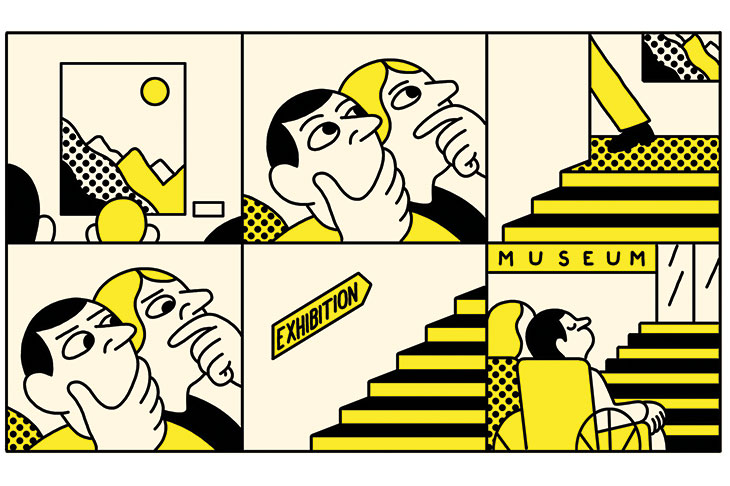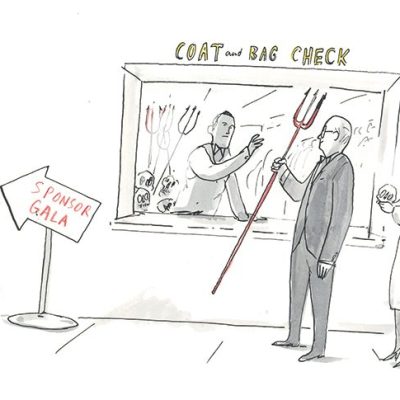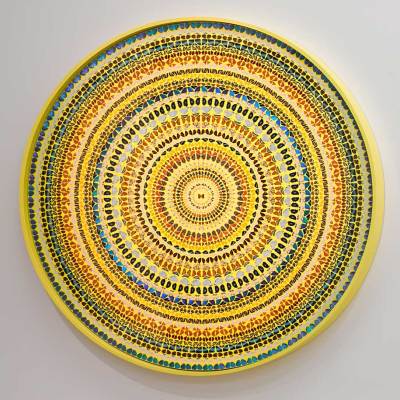Ramps, broken lifts, unhelpful displays… To what extent do accessibility measures at cultural institutions reflect a ‘culture of compliance’, rather than a genuine effort to create fully inclusive experiences?
Richard Sandell
Museums routinely discriminate against disabled people. Although anti-discrimination laws in the UK have generally proved effective in ensuring that disabled people can, in one way or another, gain entry to cultural institutions, the experiences that await them are often sorely lacking. Newly built museums and large-scale refurbishment projects continue to open with displays that betray the lack of attention paid to disabled people, especially those with learning and sensory impairments. Museums are not only inaccessible to many but they also neglect to tell stories linked to disabled people’s lives, or they portray individuals in ways that perpetuate deeply entrenched negative stereotypes of disability. The cumulative effect of this widespread and persistent disregard is that many do not feel welcome in our cultural institutions and, as a result, visit less often.
Change has been slow but we can begin to see improvements being made and, excitingly, some examples that show what is possible when museums actively listen to and fully involve disabled people in planning their new galleries, facilities and public programmes. In September this year, a new permanent gallery opened at the Wellcome Collection in London. Through objects and artworks ‘Being Human’ explores trust and identity, health and medicine, and our relationships with ourselves, with each other and the changing world around us. The Research Centre for Museums and Galleries at the University of Leicester, which I co-direct, worked with the Wellcome Collection to explore how this new gallery could not only be accessible and welcoming to all but also help to overcome the understandably negative attitudes that many disabled people have towards medical museums, where physical and mental differences are often portrayed as inherently unwelcome or problematic, as deviations from a perceived, idealised norm.
Crucially, ‘Being Human’ was shaped with the help of disabled people with wide-ranging expertise and experience. In collaborations such as this, language matters because it reflects the institution’s underlying philosophy and informs its approach to questions of access and inclusion. Throughout the process, and in the resulting gallery interpretation, we referred to ‘disabled people’ – as opposed to ‘people with disabilities’ – aligning ourselves with the disability rights movement, which is founded on the basis that people are disabled not by physical and mental differences but by a raft of barriers that limit their life opportunities and constrain access to all aspects of social, political, economic and cultural life.
From the start, we approached the issue of access to the gallery not as a goodwill gesture – an optional extra or the gift of the museum to a grateful and passive audience – but as a fundamental human right. And this changed everything. The team, led by curator Clare Barlow, consulted people with very different experiences – learning disabled people, people with sensory impairments, neurodivergent people, wheelchair users, and others. This process subtly but powerfully shapes the way that everyone experiences the gallery. As well as the inclusion of objects and artworks to touch and smell – a sculpture by Tasha Marks, for instance, evokes the scent of breast milk – and specific provision for people with hearing or visual impairments (such as interpretation using British Sign Language and audio description), the gallery’s layout has been designed to facilitate full and equitable use by all visitors.
Working with disability experts informed not only access but also content and message. Disabled people are no longer passive subjects – presented as curiosities for the non-disabled gaze – but, instead, work by disabled artists and the perspectives and voices of disabled people feature prominently in the gallery, an integral part of the story it conveys. Perhaps most radically, ‘Being Human’ makes explicit its moral and ethical position: mental and physical differences are part of human diversity; disabled people have rights – to respect and dignity as well as access to culture – and negative attitudes towards disabled people, rooted in medicalised ways of seeing difference, are called out for what they are.
We have a long way to go before museums can claim that they offer fully accessible and inclusive experiences for disabled people, but the way forward is clear. We need to move beyond a culture of compliance – in which access is viewed primarily in terms of meeting minimum standards as required by the law – and involve disabled people in all stages of planning, designing and creating museums.
Richard Sandell is professor of museum studies at the University of Leicester and co-director of the Research Centre for Museums and Galleries.
Chris Ingram
In 2016, I suffered a stroke. Before then, I’d been a regular visitor at public museums and galleries, art fairs and commercial galleries – particularly since starting my collection of modern British art in 2002. While I can walk with a stick for small stretches, I need a wheelchair to cover the often large distances involved at art fairs and museums. Jo Baring [director of the Ingram Collection] is usually with me, and in such cases will have gone ahead to check the disabled-access situation, and enlist the help of a friendly security guard to get us in if necessary.
Getting to the art itself is difficult. At most large institutions there are now lifts in place, but for some reason these often seem to be faulty. I’ve been in situations where, if the main lift is broken, there has been a queue of wheelchair users waiting behind the scenes to get in to a very small, ancient lift. We are reliant on one staff member to take us up and down, and it takes time. In such circumstances it’s hard not to feel like a second-class citizen; but that’s what comes of being in a minority, and not a very mobile one at that.
There are other little annoyances. At art fairs, for example, temporary wheelchair ramps are installed, but there is usually a large lip at the bottom of the ramp which makes it impossible to get over without assistance. Knuckles should be rapped for those little details. Such oversights seem entirely avoidable, and yet contribute to making you feel it’s all a battle.
Once you reach the art on view, it is hard to read the labels and see the works themselves. These are things I obviously took for granted before. In a wheelchair, you also get walked into a lot. People don’t tend to notice you, and your view is often obstructed. My suggestion is that museums should consider having a ‘wheelchair only’ day during an exhibition, when the labels are placed lower down the walls or vitrines to make them more visible, and there are no inconsiderate visitors blocking the view. Just one day in the run of a show would be so helpful. And imagine what good publicity the first institution to introduce such a scheme would attract.
I also feel that my experience is now heavily reliant on individual staff members. They are the ones who direct us to the lifts, the disabled toilets, ramps, etc., and their attitude and how helpful they are can make or break a visit. Training them should be paramount.
I myself have worked hard to ensure that the Ingram Collection is used as a way to improve access to art and arts education for those who wouldn’t usually go to museums. I am particularly proud of the work done in collaboration with the Lightbox in Woking (the collection is on medium-term loan to the gallery, but we also show individual works at other institutions across the UK). The collection inspires transformative outreach projects with disadvantaged groups in society, such as those suffering from mental-health problems and adults with learning difficulties. I recently sat in on a session for dementia sufferers run by Heather Thomas, the brilliant learning and engagement manager at the Lightbox, who was using a painting by John Craxton as inspiration for the group to make their own linocuts. The gallery runs audio-described tours for people who are blind or partially sighted, while its ‘Art Without Walls’ programme arranges visits to local care homes, encouraging people to make art in response to works from the collection when they cannot easily get to the gallery themselves. The art world isn’t just about glamorous international art fairs and blockbuster exhibitions by household names at major institutions: there is a whole other world out there, where disadvantaged people benefit from access to art.
As for me, I do still enjoy going to museums and art fairs – but going as a wheelchair user lessens the experience, without a doubt. It’s a hell of a disadvantage; you have to be particularly determined to go. But I don’t believe artists should curtail their ambition in terms of the art they are producing and how they want the viewer to experience it; it’s up to the host institution to make sure everyone can experience it.
Chris Ingram is a media entrepreneur and the founder of the Ingram Collection of Modern British and Contemporary Art.
From the November 2019 issue of Apollo. Preview and subscribe here.



